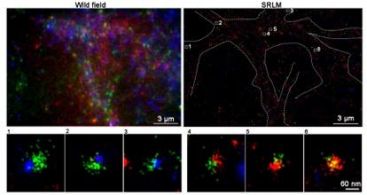
Brain is where all activities, whether moving a leg or making a decision or balancing the body take their origin. Imbalance results in epilepsy or other neurological disorders. How does brain do all this? The answer is finally found by a group of scientists from the Hong Kong University of Science and Technology (HKUST) and the Chinese University of Hong Kong (CUHK).
The team discovered that two large protein kinases, ATM and ATR, cooperate to help establish the go or stop balance, the way a yin-yang relationship exists. They are in dynamic conversation to keep correct balance between excitation and inhibition (E/I balance) by adjusting the levels of ATM and ATR.
"Our discovery offers a fresh perspective on how our brain balances excitation and inhibition - basically "go" and "stop" of behavior," said Aifang Cheng, first author of the paper. "We show that ATM and ATR regulate each other's levels in the brain. When ATM levels drop, ATR levels increase and the reverse."
ATM helps regulate only excitatory events while ATR helps regulate only the inhibitory ones and this is achieved by controlling the movement of tiny synaptic vesicles in the neuronal synapse, explained Cheng. Neuronal synapse is the gap between two neurons that regulates information flow in the brain. The findings will help in finding a way out for epilepsy, say the scientists.
Karl Herrup, Professor of HKUST and the senior author of the research paper said, "Epilepsy, for example, is a condition where one of the problems is that inhibition fails. As our findings would predict, humans with too little ATR have a problem with epilepsy, while people with ATM deficiency by contrast are ataxic - a reduced ability to make finely controlled movements and keep the proper E/I ratio. This means that there is a yin-yang relationship between ATM and ATR."
Till now ATR was not found and it remained eclipsed under ATM even at high magnification, as "all vesicles look pretty much alike," said Du Shengwang, physics professor of SRIC. To differentiate, the team has developed a three-color version of super-resolution system, which allowed them to prove that ATM and ATR were never found on the same VAMP2-containing synaptic vesicle.
Now that they found it, the team is confident that it has a potential relevance to a broader range of neurological disorders. "We believe that our work has potential relevance to a much broader range of neurologic conditions," said Herrup. The findings were published in the Journal Proceedings of the National Academy of Sciences dated January 9, 2018.









